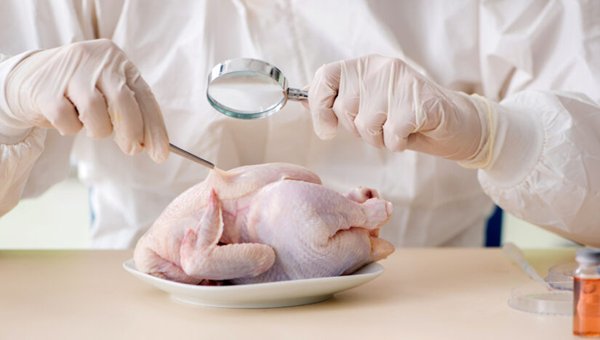In recent years, experts have been perplexed by the fact that despite successful efforts to reduce Campylobacter contamination in chicken meat in the United Kingdom, there has been no corresponding decrease in the number of infections. Campylobacter is a leading bacterial cause of foodborne illness in the UK, with chicken often being implicated in cases. In response to this public health concern, the Food Standards Agency (FSA) initiated a Campylobacter reduction program in 2010 aimed at reducing contamination levels in poultry.
Through collaboration with industry stakeholders, there was a notable decrease in the proportion of chickens contaminated with Campylobacter at levels above 1,000 colony forming units per gram (CFU/g) at retail, from 19 percent in 2014 to 5 percent in 2017. Despite these achievements, the number of human cases has remained stable at around 100 per 100,000 population between 2014 and 2019. This discrepancy has prompted the FSA to review its Campylobacter campaign to better understand why the reduction in prevalence in chicken meat has not translated into a decrease in illness among consumers.
To shed light on this issue, an expert elicitation exercise was conducted, involving 41 experts from the UK, Ireland, Denmark, the Netherlands, and France with expertise in poultry production or Campylobacter research. These experts generated 157 hypotheses, which were later consolidated into 25 key ideas. Among the suggested reasons for the lack of correlation between Campylobacter levels in chicken meat and human infections were the potential role of imported poultry meat, other food sources, the low infectious dose of Campylobacter, inadequacies in sampling methods, and lapses in food hygiene practices in consumer kitchens.
The findings of this exercise have implications not only for the UK but also for other countries facing similar challenges with Campylobacter infections. It is evident that a multi-faceted approach is needed to effectively address this public health issue. In 2019, the Advisory Committee for the Microbiological Safety of Food (ACMSF) released a report highlighting the complexity of managing Campylobacter, emphasizing that no single intervention is sufficient to eliminate the bacterium. A subsequent report from the Food and Agriculture Organization (FAO) and the World Health Organization (WHO) in 2024 underscored the importance of combining interventions to make a significant impact on Campylobacter levels and prevalence in poultry meat.
Moving forward, the FSA will consider the ranked hypotheses from the expert elicitation exercise to inform its research agenda and explore new strategies to reduce Campylobacter infections in humans. By focusing on the identified factors contributing to the persistence of Campylobacter-related illnesses, the agency aims to develop targeted interventions that address the root causes of the issue.
In conclusion, the ongoing investigation into the disconnect between Campylobacter levels in chicken meat and human infections underscores the complexity of foodborne illness prevention and underscores the need for a comprehensive and collaborative approach to food safety. By leveraging the insights of experts and continuing to prioritize research and intervention efforts, the UK and other countries can work towards reducing the burden of Campylobacter infections and improving public health outcomes in the long term.




